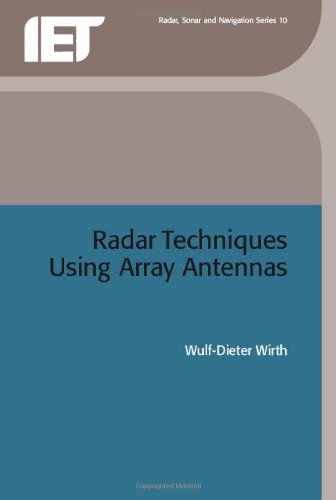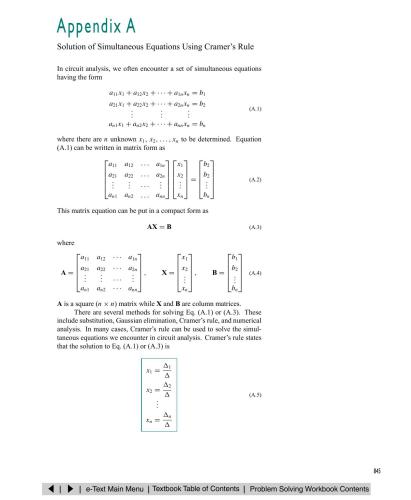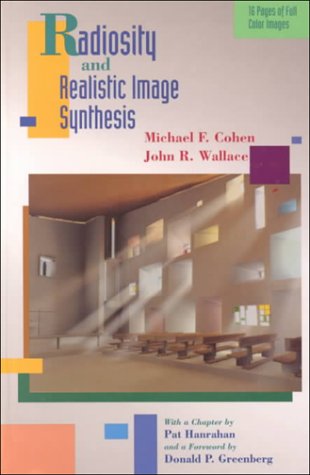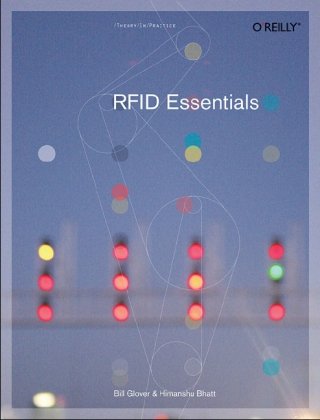Wulf-Dieter Wirth0852967985, 9780852967980
Also available:
Low-angle Radar Land Clutter – ISBN 9780852962305 Advanced Radar Techniques and Systems – ISBN 9780863411724
The Institution of Engineering and Technology is one of the world’s leading professional societies for the engineering and technology community. The IET publishes more than 100 new titles every year; a rich mix of books, journals and magazines with a back catalogue of more than 350 books in 18 different subject areas including:
-Power & Energy -Renewable Energy -Radar, Sonar & Navigation -Electromagnetics -Electrical Measurement -History of Technology -Technology Management
Table of contents :
Front Matter……Page 1
Preface……Page 4
Table of Contents……Page 0
Table of Contents……Page 7
1. Introduction……Page 19
2.1 Vectors, Matrices……Page 22
2.2.1 Addition and Subtraction……Page 23
2.2.2 Multiplication……Page 24
2.2.3 Identity Matrix……Page 25
2.2.5 Eigenvalue Decomposition……Page 26
2.3 Fourier Transform……Page 27
2.4 Filter in the Frequency and Time Domain……Page 29
2.5 Correlation……Page 32
2.6 Wiener Khintchine Theorem……Page 33
2.7 References……Page 34
3.1 The General Tasks of Signal Processing……Page 35
3.2 Introduction to Basics of Statistics……Page 36
3.2.1 Probabilities for Discrete Random Variables……Page 37
3.2.2 Continuous Random Variables……Page 39
3.2.3 Functions of Random Variables……Page 42
3.2.4 Statistical Averages……Page 46
3.2.6 Gaussian Density Function……Page 48
3.2.7 Correlated Gaussian Variables……Page 49
3.2.8 Complex Gaussian Variables……Page 50
3.3 Likelihood-ratio Test……Page 51
3.4 Parameter Estimation……Page 56
3.4.1 Variance of the Estimate and Cramer-Rao Limit……Page 57
3.5.1 Maximum-likelihood Estimation……Page 61
3.5.2 Signal Estimation with Least-mean-square Error……Page 62
3.5.3 Interference Suppression by the Inverse Covariance……Page 63
3.6 Summary……Page 65
3.7 References……Page 66
4. Array Antennas……Page 67
4.1 Array Factor……Page 68
4.2 Array Parameters……Page 73
4.2.2 Bandwidth Limitation with Phase Steering……Page 74
4.2.3 Antenna Element Spacing Without Grating Lobes……Page 76
4.2.5 Reduction of Sidelobes by Tapering……Page 77
4.3 Circular Array……Page 80
4.4 Phase and Amplitude Errors……Page 81
4.5 Architectures of Passive and Active Array Antennas……Page 87
4.5.2 Radar Equation for Active Arrays……Page 91
4.6 Concepts for an Extended Field of View……Page 92
4.6.1 Volume Array for Complete Azimuth Coverage……Page 93
4.7 Monitoring of Phased-array Antennas……Page 95
4.7.1 Antenna Measurement……Page 96
4.7.2 Transmit/Receive Module (TRM) Monitoring……Page 97
4.8 Appendix: Taylor and Bayliss Weighting……Page 99
4.9 References……Page 101
5. Beamforming……Page 103
5.1.2 Subarrays and Partial Digital Beamforming……Page 105
5.1.3 Dynamic Range Requirements……Page 107
5.1.4 Subarray Configuration for Digital Sum and Difference Beamforming……Page 108
5.1.5 Correction of Antenna Failures……Page 112
5.2 Broadband Beamforming……Page 113
5.3 Multiple Beams……Page 117
5.3.1 RF Multiple Beamforming……Page 118
5.3.2 RF Multiple Beamforming Using Subarrays……Page 119
5.3.6 Digital Multiple Beamforming Using Subarrays……Page 120
5.3.7 Multiple Beam Cluster for Target Search……Page 122
5.4 Deterministic Spatial Filtering……Page 123
5.5 References……Page 125
6.1 Analytical Signal……Page 127
6.2 Sampling and Interpolation……Page 130
6.3 Extraction of the Components I and Q in Digital Format……Page 132
6.4 Third-order Intercept Point (TOI) and Dynamic Range……Page 137
6.5 References……Page 139
7.1 Introduction……Page 140
7.2 Requirements and Basic Structure for Pulse Compression……Page 141
7.3 Binary Phase Codes……Page 142
7.4 Polyphase Code as an Approximation of Linear Frequency Modulation……Page 143
7.5.1 Application of a Weighting Function……Page 148
7.5.2 Application of a Mismatched LS Filter……Page 150
7.6 Reduction of Sidelobes by a Phase Code from Nonlinear Frequency Modulation……Page 153
7.7 Complementary Codes……Page 158
7.8 Polyphase Code with Periodic Repetition……Page 159
7.9 Pulse Eclipsing……Page 160
7.10 High Range Resolution by Oversampling and LS Pulse Compression……Page 161
7.10.2 Subpulse Filter……Page 163
7.10.4 Pulse Compression of Simulated Signals……Page 164
7.10.5 Compression of Measured Echo Signals……Page 166
7.11 Conclusions……Page 168
7.12 References……Page 169
8. Detection of Targets by a Pulse Series……Page 170
8.1 Filter against Fixed Clutter……Page 172
8.2 Doppler Filter Processor……Page 175
8.3 Adaptive Suppression of Weather Clutter……Page 178
8.3.1 Computation of the Gain……Page 180
8.3.2 Evaluation of Experimental Signals……Page 182
8.4 Suppression of Sea Clutter……Page 184
8.5 Estimation of Doppler Frequency……Page 188
8.5.1 Accuracy of Doppler Estimation by Cramer-Rao Bound……Page 191
8.5.2 Simplified Doppler Estimator……Page 192
8.6.1 Variable Doppler Frequency of the Target Signal……Page 193
8.6.2 Coherent Test Function for Long Echo Series……Page 195
8.6.3 Comparison of Detection Performance of the Filter Bank and ACE Test for LFM Doppler Signals……Page 197
8.7 Conclusions……Page 199
8.8 References……Page 200
9. Sequential Detection……Page 201
9.1 Incoherent Detection……Page 203
9.2.1 Independent Test of All Range Elements……Page 204
9.2.3 Combined Test with Range-dependent Design Signal……Page 205
9.2.4 Comparison of the Test for Multiple Range Cells with the Fixed Sample Size Test……Page 207
9.2.5 Sequential Detection with a Filter for the Rejection of Stationary Clutter……Page 208
9.3 Coherent Test Function……Page 209
9.3.2 Sequential Test Function with Autocorrelation Estimates……Page 210
9.3.3 Simulation Studies for a Comparison of Incoherent and Coherent Sequential Tests……Page 215
9.3.4 Gain Comparison of the Coherent Sequential and Fixed Sample Size Test……Page 218
9.3.5 Extension for Multiple Range Elements……Page 219
9.4 Comparison of Detection Procedures……Page 222
9.5 Adaptation to the Noise Level and Energy Management……Page 223
9.6 Sequential Test for Long Signal Series……Page 224
9.6.1 Sequential Test with Coherent Sections……Page 225
9.6.2 Simulation Studies……Page 226
9.7 Experimental System……Page 229
9.8 Conclusions……Page 232
9.9 References……Page 233
10. Adaptive Beamforming for Jammer Suppression……Page 235
10.1 Deterministic Generation of Pattern Notches……Page 237
10.1.1 LMS Weighting……Page 238
10.1.2 Multiple Beam Approach……Page 240
10.1.3 Limit for Number of Notches……Page 241
10.2 Adaptive Jammer Suppression……Page 242
10.2.1 Optimal Processing……Page 243
10.2.2 Illustration with a Model……Page 244
10.2.3 Orthogonalisation and Eigenmatrix Projection……Page 245
10.3.1 Adaptation Before Beamforming……Page 248
10.3.2 Adaptive Beamforming with Subarrays……Page 249
10.4.1 Sample Matrix Estimation……Page 250
10.4.2 Projection Methods……Page 251
10.4.3 Channel Errors……Page 253
10.4.4 Weighted Projection: Lean Matrix Inversion Method……Page 256
10.5 Realisation Aspects……Page 258
10.6 Experiments with the ELRA System……Page 259
10.7 Conclusions……Page 264
10.8 References……Page 265
11.1 Likelihood Direction Estimation……Page 267
11.2 Experimental Monopulse Correction for Failing Elements……Page 272
11.3 Variance of Monopulse Estimate……Page 274
11.4 Monopulse Correction against Jamming……Page 280
11.4.1 Correction with Likelihood Estimation……Page 281
11.4.2 Correction in Expectation……Page 284
11.4.3 Statistical Performance Analysis of Estimation……Page 289
11.6 Indication of Multiple Targets……Page 293
11.7 Conclusions……Page 294
11.8 References……Page 295
12.1 Introduction……Page 297
12.2 Parametric Estimation……Page 298
12.2.1 Resolution Limit from Cramer-Rao Inequality……Page 306
12.3 Experimental Verification of Superresolution……Page 309
12.4 Resolution by Angular Spectral Estimation Algorithms……Page 312
12.4.1 Resolution and the Dimension of the Signal Subspace……Page 314
12.4.2 Estimation of the Signal Subspace Dimension……Page 316
12.6 References……Page 319
13.2 Doppler-shifted Clutter Spectrum……Page 322
13.3 Space-time Processing……Page 325
13.4 Necessary Degrees of Freedom……Page 328
13.5 Suboptimal Concept with FIR Filter: Reduction of Time Dimension……Page 330
13.6 Suboptimal Concept with Subarrays: Reduction of Spatial Dimension……Page 332
13.7 Adaptive Processing……Page 336
13.8 Sideways-looking Radar……Page 338
13.10 References……Page 339
14.1 Basic Principle of SAR……Page 341
14.2 Problems of Moving-target Detection and Location……Page 347
14.3 Clutter Suppression with Multichannel Array Radar……Page 348
14.5 SAR/MTI Processing……Page 355
14.6 Jammer Suppression……Page 357
14.7 Object Height by Interferometry……Page 359
14.8 Experimental System AER and Results……Page 362
14.9 Summary and Motivation for SAR with Active Phased-array Antennas……Page 364
14.10 References……Page 367
15.1 Introduction: Basic Principles……Page 369
15.2 Synthetic Aperture and Beamforming by Target Motion……Page 371
15.3 Target Cross-range Image……Page 372
15.4.1 Range Focusing and Range Walk……Page 374
15.4.2 Focusing with Straight-line Assumption……Page 376
15.4.3 Focusing for Arbitrary Flight Paths……Page 377
15.5 High Range Resolution……Page 384
15.6 Alternative Image Planes……Page 388
15.8 References……Page 389
16.1 Fluctuation Effects……Page 391
16.2 Doppler Spectrum Evaluation……Page 394
16.3 References……Page 401
17. Experimental Phased-array System ELRA……Page 402
17.1 System Overview……Page 403
17.2 Antenna Parameter Selection……Page 405
17.3 Antenna Elements and Modules……Page 407
17.4 Antenna Control and Monitoring……Page 410
17.5 Radar Functions and Waveforms of the ELRA System……Page 415
17.5.1 Available Codes and Transmit Pulses……Page 417
17.5.2 Time Budget for a Parameter Example……Page 418
17.6 Digital Signal Processing……Page 420
17.8 Control System, Operation and Display of Functions and Results……Page 423
17.10 Conclusions……Page 428
17.11 References……Page 429
18.1 Introduction……Page 430
18.2 The Proposed Concept……Page 431
18.4 The Receiving System……Page 432
18.5 Resolution Cell……Page 435
18.6 The Phase Code……Page 436
18.7 Signal Processing……Page 437
18.8 Range Performance……Page 439
18.9 Coherent and Sequential Test Function with ACE……Page 440
18.10 OLPI and Multifunction Radar……Page 441
18.11 Experimental Results……Page 442
18.12 Detection and Classification of Hovering Helicopters……Page 443
18.12.1 Classification by Flash Period……Page 447
18.12.2 ISAR Image and Spectrum of Rotor Blades……Page 448
18.13 Spatial Coding……Page 450
18.14 Summary and Conclusions……Page 456
18.15 References……Page 457
19.1 Parameter Selection for Search and Tracking……Page 459
19.1.1 Search Period……Page 460
19.1.2 False-alarm Probability……Page 464
19.1.4 Range Resolution……Page 465
19.1.5 Tracking Parameters……Page 466
19.2 Search Procedure……Page 468
19.3 References……Page 469
Glossary……Page 471
A……Page 475
C……Page 476
D……Page 477
E……Page 478
F……Page 480
I……Page 481
J……Page 482
M……Page 483
O……Page 484
P……Page 485
R……Page 486
S……Page 487
T……Page 490
Z……Page 491







Reviews
There are no reviews yet.